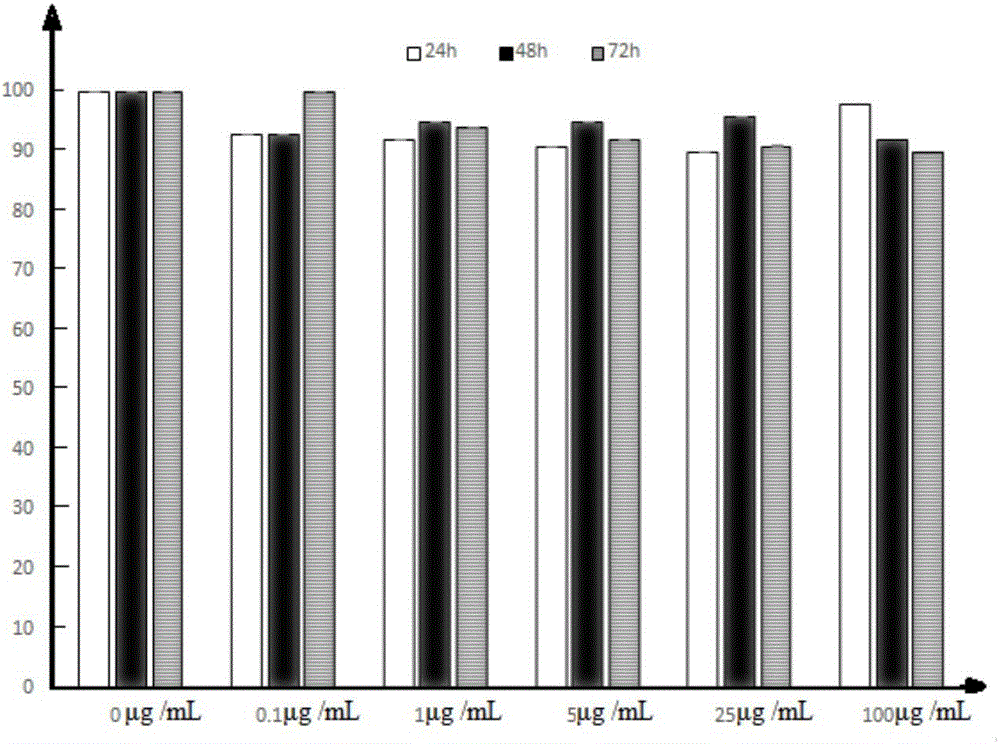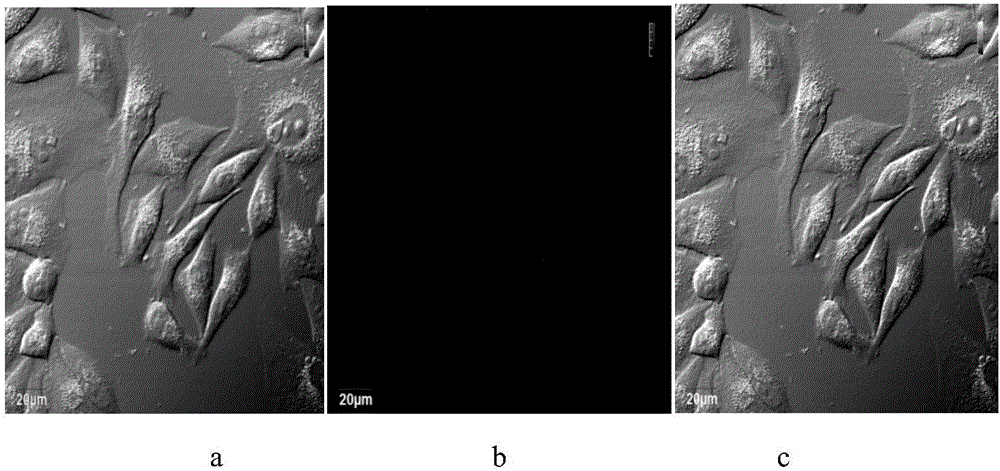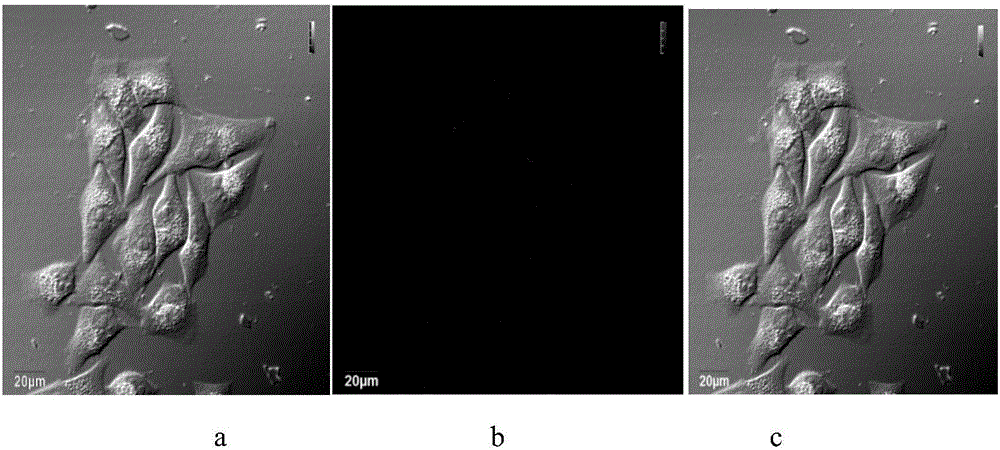Mitochondrion 3,4,9,10-perylenetetracarboxylic dianhydride targeting fluorescent probe and application thereof
A technology of fluorescent probes and mitochondria, applied in fluorescence/phosphorescence, luminescent materials, and material analysis through optical means, can solve the problems of poor solubility of perylene anhydride molecules and unfavorable promotion of perylene anhydride, so as to improve water solubility and Effects of biocompatibility, improvement of fluorescence performance, and improvement of hydrophilicity
- Summary
- Abstract
- Description
- Claims
- Application Information
AI Technical Summary
Benefits of technology
Problems solved by technology
Method used
Image
Examples
Embodiment 1
[0033] A fluorescent probe targeting mitochondrial perylene anhydride, characterized in that its structural formula is:
[0034]
[0035] The molecular formula of the fluorescent probe targeting mitochondrial perylene anhydride is C 104 h 108 Br 2 N 4 o 18 P 2 , with a molar mass of 1923.74.
Embodiment 2
[0037] Application of the fluorescent probe targeting mitochondrial perylene anhydride as in Example 1 above in live cell fluorescence imaging.
[0038] The applicant of the present invention applied the probe to label living cells and performed cytotoxicity and imaging analysis. The specific experimental methods are as follows:
[0039] 2.1 Reagents are shown in Table 1 below:
[0040] Table 1 Reagents
[0041]
[0042]
[0043] 2.2 Instruments are shown in Table 2 below:
[0044] Table 2 Instruments
[0045]
[0046] 2.3 Cell culture
[0047] (1) Inoculate human cervical cancer cells (HeLa) on high-sugar DMEM medium containing 10% fetal bovine serum, 100 U / mL streptomycin, and 100 U / mL penicillin;
[0048] (2) At 37°C, 5% CO 2 cultured in a separate incubator, and the medium was replaced every 24 hours;
[0049] (3) When the cells grow to 80%, they are digested and passaged with 0.25% trypsin.
[0050] 2.4 Cytotoxicity experiment and result analysis:
[0051] ...
Embodiment 3
[0078] A method for using a fluorescent probe targeting mitochondrial perylene anhydride, comprising the following steps: adding living cells to a probe solution containing a probe concentration n≥1 μg / mL for treatment for a certain period of time.
[0079] In a preferred embodiment, live cells are added to a probe solution containing a probe concentration n≥10 μg / mL for at least 60 min.
[0080] In a preferred solution, live cells are added to a probe solution containing a probe concentration n≥10 μg / mL for 60-120 min.
[0081] In a preferred embodiment, the probe concentration in the probe solution is 10 μg / mL≤n≤100 μg / mL.
[0082] In a preferred solution, the probe concentration in the probe solution is n=20 μg / mL.
[0083] 3.1 For the above method, the applicant of the present invention has done the following specific experiments and analysis on the upload rate of fluorescent probes to living cells:
[0084] 3.1.1 Cell upload rate experiment
[0085] Use HeLa cells in t...
PUM
 Login to View More
Login to View More Abstract
Description
Claims
Application Information
 Login to View More
Login to View More - R&D
- Intellectual Property
- Life Sciences
- Materials
- Tech Scout
- Unparalleled Data Quality
- Higher Quality Content
- 60% Fewer Hallucinations
Browse by: Latest US Patents, China's latest patents, Technical Efficacy Thesaurus, Application Domain, Technology Topic, Popular Technical Reports.
© 2025 PatSnap. All rights reserved.Legal|Privacy policy|Modern Slavery Act Transparency Statement|Sitemap|About US| Contact US: help@patsnap.com



